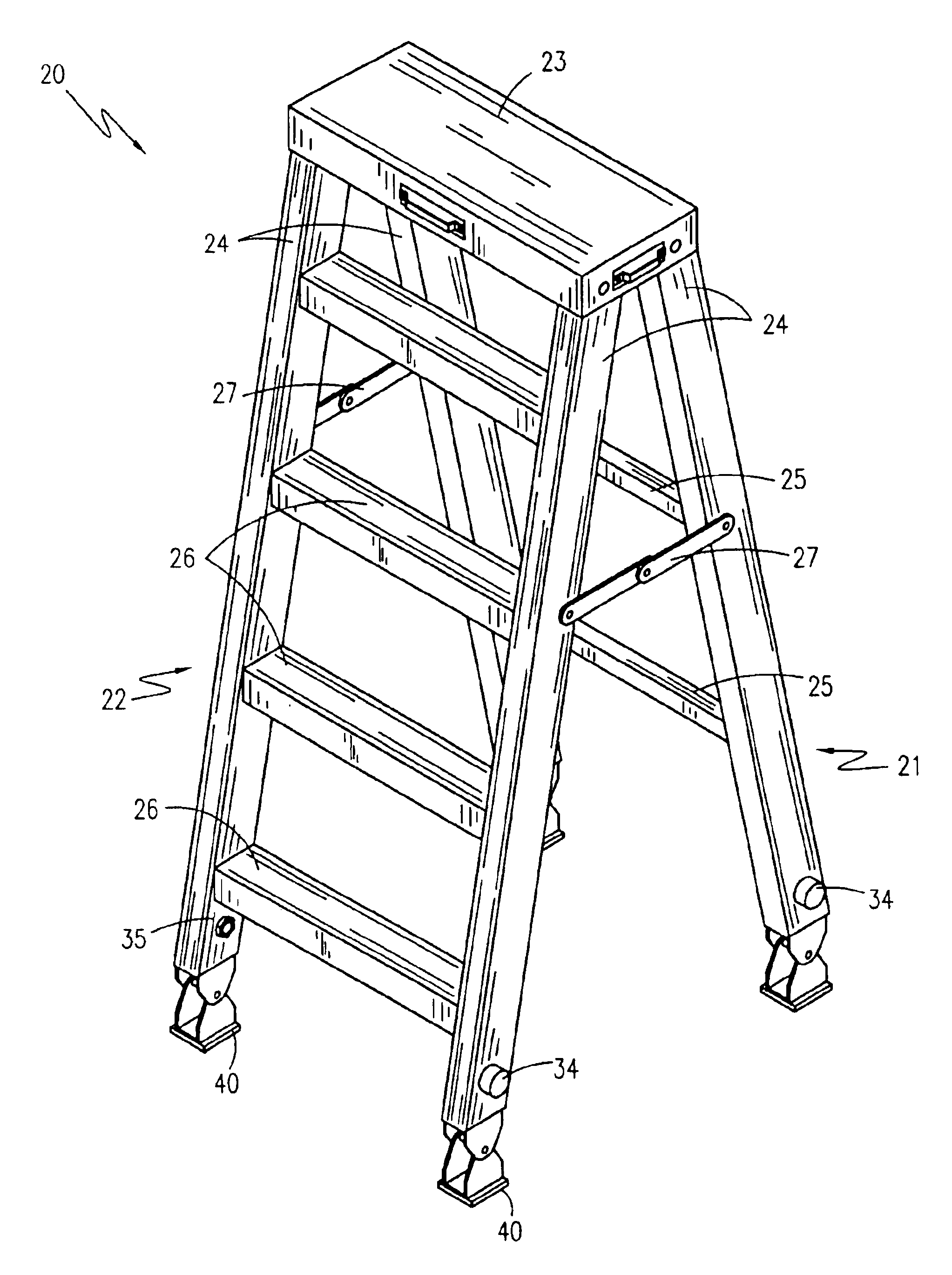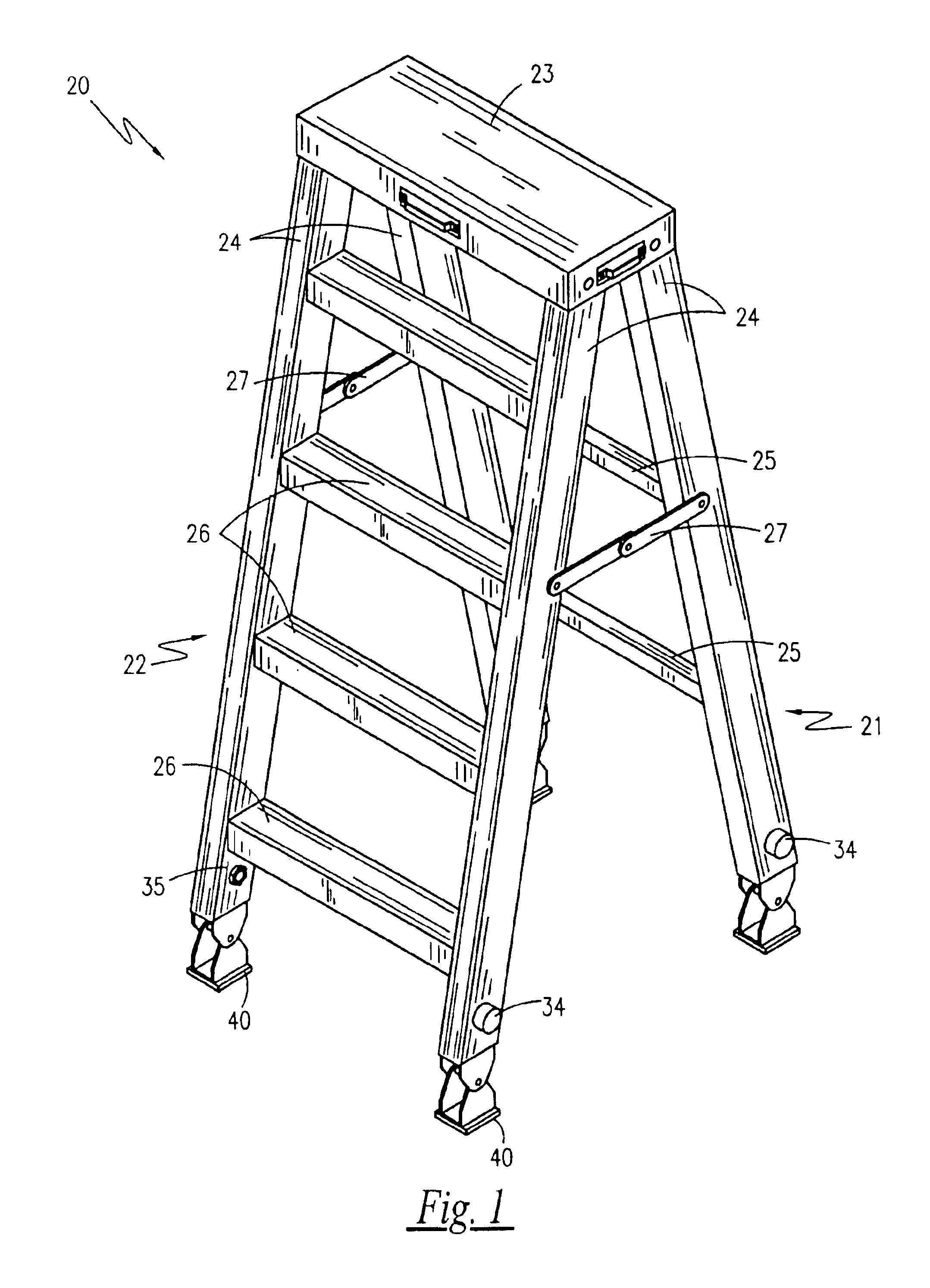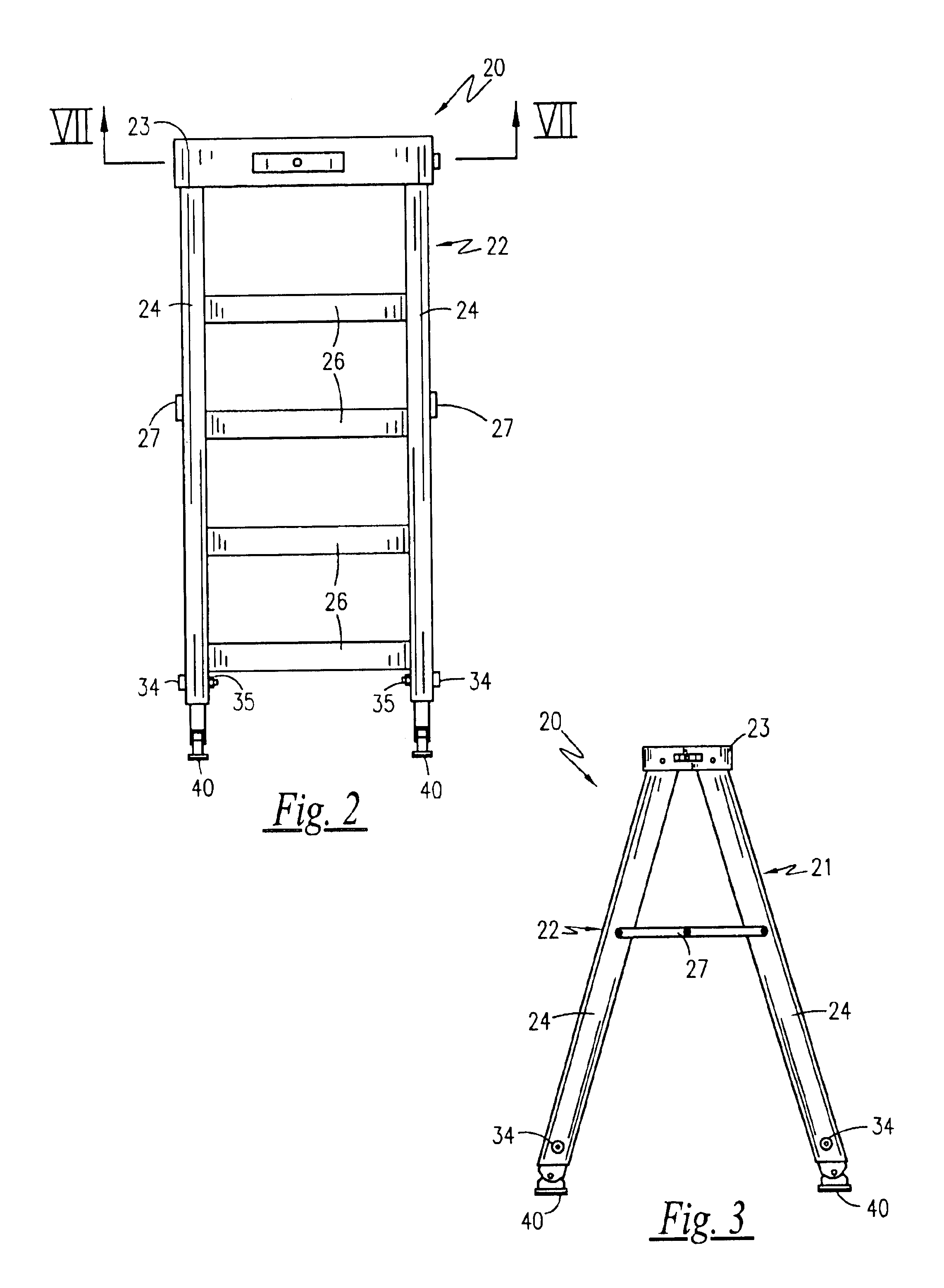Adjustable leveling stepladder
a stepladder and adjustable technology, applied in the field of ladders, can solve the problems of ineffective achievement of the purpose, insufficient adjustment apertures, and insufficient safety of users,
- Summary
- Abstract
- Description
- Claims
- Application Information
AI Technical Summary
Benefits of technology
Problems solved by technology
Method used
Image
Examples
Embodiment Construction
of the Figures
Referring to FIGS. 1-6, depicted is an adjustable leveling stepladder 20, according to the preferred embodiment of the present invention. Consisting essentially of a modified conventional stepladder design having telescoping legs, the adjustable leveling stepladder 20 has a stabilizing frame 21 and a ladder frame 22 hingedly connected to a top plate 23 in an opposing fashion such that they fold together. The stabilizing frame 21 consists of two support legs 24 connected in parallel to one another via at least one stabilizing cross-members 25. The ladder frame 22 consists of two support legs 24 connected in parallel to one another by a plurality of step plates 26. In a storage position, the stabilizing frame 21 and the ladder frame 22 are folded together such that they lie in a position approximately parallel to one another. In a use position, the stabilizing frame 21 and the ladder frame are extended away from one another such that they form an A-shaped profile, and ar...
PUM
 Login to View More
Login to View More Abstract
Description
Claims
Application Information
 Login to View More
Login to View More - R&D
- Intellectual Property
- Life Sciences
- Materials
- Tech Scout
- Unparalleled Data Quality
- Higher Quality Content
- 60% Fewer Hallucinations
Browse by: Latest US Patents, China's latest patents, Technical Efficacy Thesaurus, Application Domain, Technology Topic, Popular Technical Reports.
© 2025 PatSnap. All rights reserved.Legal|Privacy policy|Modern Slavery Act Transparency Statement|Sitemap|About US| Contact US: help@patsnap.com



